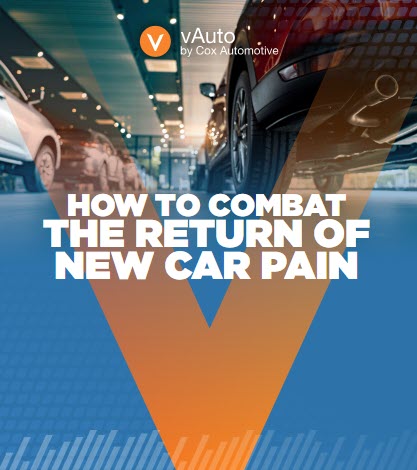A Gross Deception: You Don’t Need To Stock More to Sell More
A vAuto Performance Manager (PM) made an astute observation about the belief among dealers that you need to stock more vehicles than you typically sell.
“I see it time and time again,” the PM says. “It doesn’t matter how many units a dealer carries in inventory. They’re always selling X number of cars each month.”
For example, the PM says dealers often reduce or increase inventory due to seasonality.
Dealers who might typically carry 100 units in stock to sell 50 cars, trim their inventories—and still sell 50 cars a month, the PM explains. Or dealers may increase their inventories without seeing an appreciable lift in sales.
“I came to the conclusion that the number of vehicles a dealer sells has nothing to do with how many they have in stock,” the PM says.
Being a thoughtful person, the PM also asked a logical follow-up question: If a dealer’s inventory size has no bearing on their retail sales volumes, why does the stock-more-to-sell-more practice persist?
The PM found the answer by looking back at his own career in the car business, which included stints as sales manager, general sales manager and general manager at different stores.
“I understand why dealers stock 100 cars to sell 50 cars, or 150 cars to sell 100 cars,” the PM says.
“It’s because there was a time when you had to.”
That “time” predates the rise of the Internet. It’s when customers came to a handful or more of individual dealerships to figure out the used vehicle they would purchase.
Back then, customers would say, ‘I’m looking for a mid-sized sedan, what have you got?’
“It was our sales process that put those deals together,” the PM says.
“As dealers, we needed six to eight mid-sized sedans so we could fit them into one of those vehicles,” the PM continues.
“But today, the customer is doing their vehicle selection online. They’re coming in saying I want to look at that LaCrosse or Impala or that SUV that I saw online. They’re not saying, ‘I saw this SUV online, what else do you have?’”
The PM is correct.
While you certainly need vehicles to attract and sell today’s customers online, you don’t need, or can afford, to stock more than you sell to find success.
For months, I’ve been encouraging dealers to strike a better balance between the number of vehicles they carry in inventory and the rolling 30-day total of vehicles they retail.
I’ve been advocating that dealers maintain a 1:1 ratio to counter the rise of margin compression and faster pace of Cost to Market appreciation that causes most used vehicles to lose most, if not all, of their profit margin potential within 30 days on the lot.
I asked the PM how he handles these conversations with dealers.
“I’ll have a discussion with a dealer who has 120 cars in inventory and he’s selling 45,” the PM says. “I’ll show how the Cost to Market exceeds 90 percent after 30 days in inventory. Then, I’ll explain what’s happening to all the inventory the dealer has sitting around in excess of 30 days, and how it’s putting them in a position where making a return on investment is impossible.
“Dealers understand that you can’t make money when the margin’s gone after 30 days and you’ve got 90 days of inventory sitting on the ground.”
The PM adds that when dealers strike a balance between their inventory levels and the rolling 30-day total of retail sales, it’s not necessarily about having the right car, it’s about treating every car right.
“I know people say you have to have the right inventory to make sure customers will find it and buy it,” the PM says. “But I I don’t think there’s a bad car as long as I have some understanding of what the vehicle’s supply and demand is in the marketplace.
“If I know that, then I can know where I need to position the vehicle to sell it in the current market. It’s what you do with a car that is going to make it a good car or a bad car, or a good decision or a bad decision.”
I couldn’t agree more. I’ve come to call this clear-eyed approach to understanding each used vehicle’s investment value as making peace with the truth with every car.
The PM added a final point about the benefit of maintaining a 1:1 ratio between your current inventory and your rolling 30-day total of retail sales: “If you’re stocking 45 cars to sell 45 cars, and you’re not stocking 90 cars to sell 45, guess what? You’ve got half as many vehicles to worry about, which means you can give them all the attention they deserve.”
There you have it—great, share-worthy perspective from a PM.
The post A Gross Deception: You Don’t Need To Stock More to Sell More appeared first on Dale Pollak.








